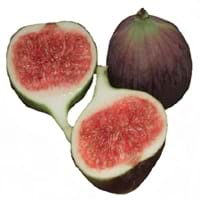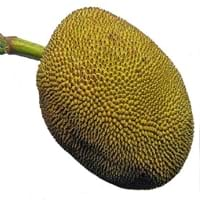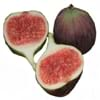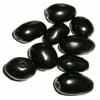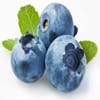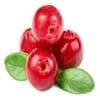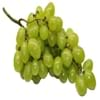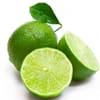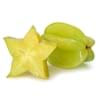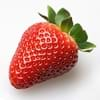Health Benefits
Cancer prevention, Controls blood pressure, Heart care, Increase in haemoglobin, Prevents constipation, Prevents macular degeneration, Reduces nervous tension
Cancer prevention, Heart care, Prevents constipation, Regulation of heart rate, Treatment of colonic diseases
General Benefits
Controls blood pressure, Helps in weight loss, Maintains healthy cholesterol level, Strengthens bones
Controls blood pressure, Cures cough, Digestive aid, Flu treatment, Improves eye vision, Treatment of common cold
Skin Benefits
Brightens and lightens complexion, Hydrates skin, Skin rejuvenation, Treatment of acne
Brightens and lightens complexion, Reduces wrinkles
Hair Benefits
Good conditioner, Regulates hair growth, Softening mask
Promotes longer and healthier hair, Regulates hair growth
Allergy Symptoms
Abdominal pains, Anaphylaxis, Coughing, Headaches, Hives, Itching, Nasal congestion, Skin rash, Sneezing, Sore throat, Swelling of hands
Abdominal cramps, Diarrhea, Skin Rashes, Swelling of mouth, tongue or lips, Vomiting
Side Effects
Allergic reaction, Skin rash, Possibly unsafe during pregnancy
Allergic reaction, Coagulation
Pregnant Women
Yes
Not Available
Best Time to Eat
Best if taken as a breakfast (or empty stomach), Don't consume at night and before bed, Morning time (before lunch)
Along with meal, As a snack in the late afternoon, Don't consume at night and before bed, Eat the fresh ones, avoid mixing with any other foods, don't eat after meal., Morning time (before lunch)
Vitamin B5 (Pantothenic Acid)
Vitamin C (Ascorbic Acid)
Vitamin K (Phyllochinone)
Not Available
Phytosterol
Not Available
Calories in Fresh Fruit with Peel
Not Available
Calories in Fresh Fruit without Peel
Not Available
Type
Tree fruit
Tree fruit, Tropical
Season
Summer, Winter
Autumn, Monsoon, Summer
Varieties
Abyad, Adriatic, Alma, Atreano, Bataglia, Black Bethlehem, Black Madeira, Black Mission, Brown Turkey, Sierra, Calimyrna, Kadota, Deanna, Figoin and Hardy Chicago Fig
Black Gold, Cheena, Cochin, Dang Rasimi, Golden Nugget and Golden Pillow
Color
Green, Purple, Red
Dark green, Golden yellow, Green, Indigo, Magenta, Yellowish-orange
Origin
Western Asia
India
Soil Type
Clay, Limestone, Loam, Sandy
Clay loam, Porous, Sandy, Well-drained
Climatic Conditions
Dry, Warm
Humid, Warm
Facts about
- Fig tree is considered as a symbol of abundance, fertility and sweetness.
- The fig is made up of 55% of natural sugar so they are the sweetest fruits.
- Figs are used as a fat substitute in recipes.
- There are up to 500 seeds in Jackfruit & these seeds are edible.
- Root extracts of Jackfruit tree is used to treat diarrhea, fever and asthma.
- The taste of jackfruit is combination of mango, banana, melon and papaya.
Top Producer
Turkey
India
Other Countries
Albania, Algeria, Brazil, Egypt, Iran, Morocco, Syria, Tunisia, United States of America
Bangladesh, Indonesia, Nepal, Thailand
Top Importer
France
United States of America
Top Exporter
Turkey
India
Botanical Name
Ficus carica
Artocarpus heterophyllus
Synonym
Not Available
Artocarpus heterophylla or Artocarpus integra or Artocarpus integrifolia
Subkingdom
Tracheobionta
Tracheobionta
Division
Magnoliophyta
Magnoliophyta
Class
Magnoliopsida
Magnoliopsida
Subclass
Alismidae
Alismidae
Species
Ficus carica
A. heterophyllus
Generic Group
Mulberry
Not Available
Difference Between Fig and Jackfruit
We might think that Fig and Jackfruit are similar with respect to nutritional value and health benefits. But the nutrient content of both fruits is different. Fig and Jackfruit Facts such as their taste, shape, color, and size are also distinct. The difference between Fig and Jackfruit is explained here.
The amount of calories in 100 gm of fresh Fig and Jackfruit with peel is 74.00 kcal and Not Available and the amount of calories without peel is Not Available and 95.00 kcal respectively. Thus, Fig and Jackfruit belong to Low Calorie Fruits and High Calorie Fruits category.These fruits might or might not differ with respect to their scientific classification. The order of Fig and Jackfruit is Rosales and Rosales respectively. Fig belongs to Moraceae family and Jackfruit belongs to Moraceae family. Fig belongs to Ficus genus of Ficus carica species and Jackfruit belongs to Artocarpus genus of A. heterophyllus species. Beings plants, both fruits belong to Plantae Kingdom.
